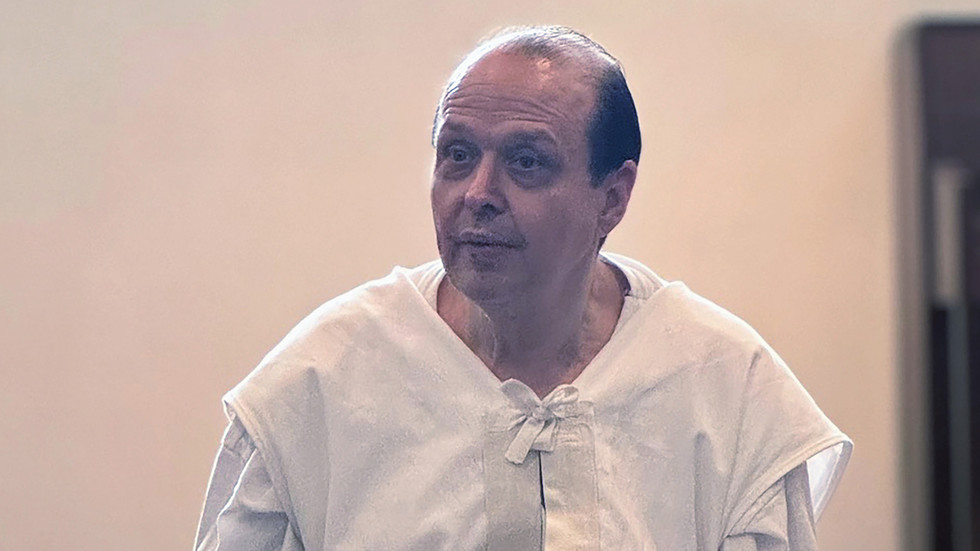Robert Roberson’s case has garnered significant attention, particularly regarding the law that permits the challenge of convictions when new scientific evidence comes to light. Roberson, who has been on death row in Texas, recently had his execution halted by the state’s Supreme Court due to his imminent testimony regarding the controversial evidence that led to his conviction. The pending execution was originally scheduled for Thursday, but the court intervened in light of a subpoena requiring Roberson to provide testimony to a Texas House committee. This situation has underscored the complexities surrounding the once widely accepted diagnosis of shaken baby syndrome, which has increasingly come under scrutiny in the face of evolving scientific understanding.
Roberson’s case dates back to 2002 when he was accused of murdering his two-year-old daughter, Nikki Curtis. Following the allegations that he violently shook her to death, he was sentenced to death in 2003. Prosecutors claimed that Roberson’s actions resulted in fatal head trauma to the child. However, court records highlight that in the days preceding Nikki’s death, she had been diagnosed with a viral infection and was experiencing fever. On the morning of her passing, Roberson discovered her unresponsive after allegedly finding that she had fallen out of bed. Despite the dramatic claims against him, medical examinations revealed a small brain bleed alongside inflammation, but there were no indications of other forms of abuse.
The central argument from Roberson’s legal team posits that the crime he was convicted of never occurred. Their claim is backed by the assertion that Nikki’s death was due to natural causes, specifically severe viral pneumonia, rather than the alleged shaking. Historically, the presence of the “triad” symptoms—brain swelling, bleeding on the brain’s surface, and retinal hemorrhages—were conventionally interpreted as definitive indicators of shaken baby syndrome, leading to a surge of prosecutions based on these findings. However, as more medical professionals have scrutinized these standards, the validity of this diagnosis has been called into question. The evolving perspective on the underlying science now challenges previously unassailable convictions.
Roberson’s impending execution was postponed after a concerted effort from a diverse coalition of lawmakers, medical experts, and even the former lead prosecutor from his case. These stakeholders were unified in their pursuit of justice, illustrating the significant pushback against entrenched legal decisions fueled by outdated scientific methodologies. To effect this delay, Texas lawmakers belonging to the House Committee on Criminal Jurisprudence convened and voted unanimously to issue the subpoena. The urgency of this action followed hearings addressing the ramifications of the 2013 “junk science statute,” a law permitting defendants to contest their convictions when new scientific evidence undermines the original trial findings.
This case exemplifies a critical examination of the intersection between law and evolving scientific standards, particularly concerning cases involving shaken baby syndrome. The implications of Roberson’s situation resonate beyond his individual case, indicating a broader reassessment of how scientific evidence is utilized in the courtroom. The legal system’s reliance on previously accepted medical diagnoses can lead to catastrophic outcomes, such as wrongful convictions and death penalty sentences. This case not only raises questions about the validity of the evidence presented during Roberson’s trial but also highlights the necessity for ongoing discourse regarding the role of science in legal matters.
As Roberson prepares to testify before lawmakers, the unfolding narrative of his case illuminates the potential for reform in how the legal system approaches scientific evidence. The involvement of bipartisan legislative efforts signifies a shift in recognizing the consequences that emerge when scientific errors lead to severe legal repercussions. The cautious revisitation of shaken baby syndrome within the context of Roberson’s case serves as a pivotal moment in the legal landscape of Texas and possibly nationwide—demonstrating a growing acknowledgment of the need for the justice system to keep pace with advancements in medical science and forensic analysis. As his execution remains stayed, Roberson’s story could pave the way for necessary changes in how similar cases are adjudicated in the future.

